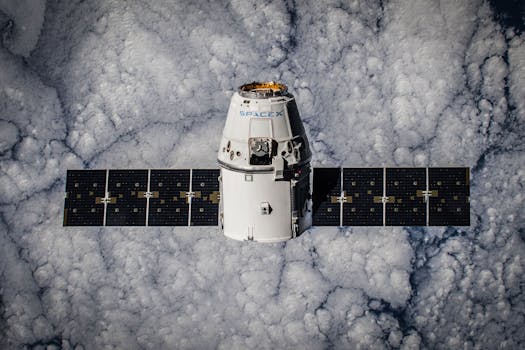The New Frontier: Exploring the Latest Trends in Satellite Communication

The New Frontier: Exploring the Latest Trends in Satellite Communication
Satellite communication is a rapidly evolving field, with new trends and technologies emerging every year. The latest trends in satellite communication are transforming the way we connect and communicate, enabling new applications and services that were previously unimaginable. In this article, we will explore the latest trends in satellite communication, including the growing demand for satellite-based broadband, the increasing use of small satellites, and the development of new satellite constellations.
Satellite communication has come a long way since the launch of the first commercial communications satellite, Intelsat 1, in 1965. Today, satellite communication plays a vital role in global communication, providing connectivity to remote and underserved areas, enabling international communications, and supporting a wide range of applications, including navigation, weather forecasting, and Earth observation. The latest trends in satellite communication are driven by advancements in technology, innovation, and changing market demands.
Growing Demand for Satellite-Based Broadband
One of the latest trends in satellite communication is the growing demand for satellite-based broadband. With the increasing need for high-speed internet access, satellite-based broadband is becoming an attractive option for remote and underserved areas, where traditional terrestrial connectivity is limited or non-existent. Satellite-based broadband offers a range of benefits, including high-speed connectivity, reliability, and cost-effectiveness. Companies such as Hughes Network Systems, ViaSat, and Intelsat are leading the way in providing satellite-based broadband services, with new constellations and technologies being developed to meet the growing demand.
The growing demand for satellite-based broadband is driven by the increasing need for digital connectivity, particularly in remote and underserved areas. According to a report by the International Telecommunication Union (ITU), the number of internet users in rural areas is expected to increase significantly, with an estimated 3.8 billion people expected to be online by 2025. Satellite-based broadband is well-positioned to meet this demand, providing high-speed connectivity to areas where traditional terrestrial connectivity is limited or non-existent.
Increasing Use of Small Satellites
Another trend in satellite communication is the increasing use of small satellites. Small satellites, also known as smallsats, are satellites that weigh less than 500 kilograms and are typically launched into low Earth orbit. Smallsats offer a range of benefits, including lower costs, faster development times, and increased flexibility. With the development of new technologies and launch systems, smallsats are becoming increasingly popular, with a growing number of companies and organizations launching smallsat constellations.
The increasing use of small satellites is driven by the growing demand for satellite-based services, including Earth observation, communication, and navigation. Smallsats offer a range of benefits, including high-resolution imaging, real-time communication, and precise navigation. Companies such as Planet Labs, DigitalGlobe, and SpaceX are leading the way in smallsat technology, with new constellations and applications being developed.
New Satellite Constellations
A third trend in satellite communication is the development of new satellite constellations. Satellite constellations are groups of satellites that work together to provide a specific service or application. New satellite constellations are being developed to meet the growing demand for satellite-based services, including communication, navigation, and Earth observation. Companies such as OneWeb, Amazon Kuiper Systems, and SpaceX are leading the way in developing new satellite constellations, with a focus on providing high-speed connectivity, low-latency communication, and high-resolution imaging.
The development of new satellite constellations is driven by the growing demand for satellite-based services, including communication, navigation, and Earth observation. New satellite constellations offer a range of benefits, including high-speed connectivity, real-time communication, and precise navigation. With the development of new technologies and launch systems, satellite constellations are becoming increasingly popular, with a growing number of companies and organizations launching new constellations.
Conclusion
In conclusion, the latest trends in satellite communication are transforming the way we connect and communicate. With advancements in technology, innovation, and changing market demands, satellite communication is becoming more accessible and affordable, enabling new applications and services. The growing demand for satellite-based broadband, the increasing use of small satellites, and the development of new satellite constellations are just a few of the trends that are shaping the future of satellite communication.
